Effects of Using World Indicators for Online ESD Learning
Abstract
1. Introduction
Collective Intelligence
2. Online Learning Method
- Students are instructed on how to access the world database
- Introduce students to a comprehensive worldview across time and space;
- Collect longitudinal data
- Trends in indicators over the years reveal the situation of a country;
- Comparing two indicators
- Students choose a country for which two indicators engender a discrepancy beyond the intuitive notion, common sense, or innate opinion of students, leading them to the conceptual gateway for transforming their concept;
- Look for potential factors to explain a gap
- Students engage in searching for diagnostic information and constructing a consistent opinion to explain the gap separating indicators;
- Transformation
- Students are tasked with understanding target areas and the relationships between indicators by deciphering resources and opinions among themselves. They unravel promising or deadlocked notions in conjunction with peers. They can naturally accommodate their conceptualization to the resulting CI.
3. Analytical Frameworks
3.1. Qualitative Content Analysis
3.2. Sequential Analysis
- R: Number of rows (given)
- C: Number of columns (target)
- xrc: Observed joint frequency for cell in r-th row and c-th column of a R × C table
- pc: Probability for the c-th column = x+c + N
- pr: Probability for the r-th row = xr/N
- erc: Expected frequency, by chance = p+c × xr+
3.3. Social Network Analysis
3.4. Research Questions
4. Materials and Methods
Online Learning Process
5. Results
5.1. Qualitative Content Analysis
…I was able to draw conclusions about the link between infrastructure development and air pollution based on my collected information. Additionally, I was relieved that the link was explicitly explained in your document. The perspective of aging facilities from S92 also led to further understanding….(From a message about Bangladesh, by S34, translated by the author)
5.2. Sequential Analysis
- Isolation type
- Communication type
- Completion type
5.3. Social Network Analysis
6. Discussion
7. Conclusions
Funding
Institutional Review Board Statement
Informed Consent Statement
Data Availability Statement
Conflicts of Interest
Appendix A
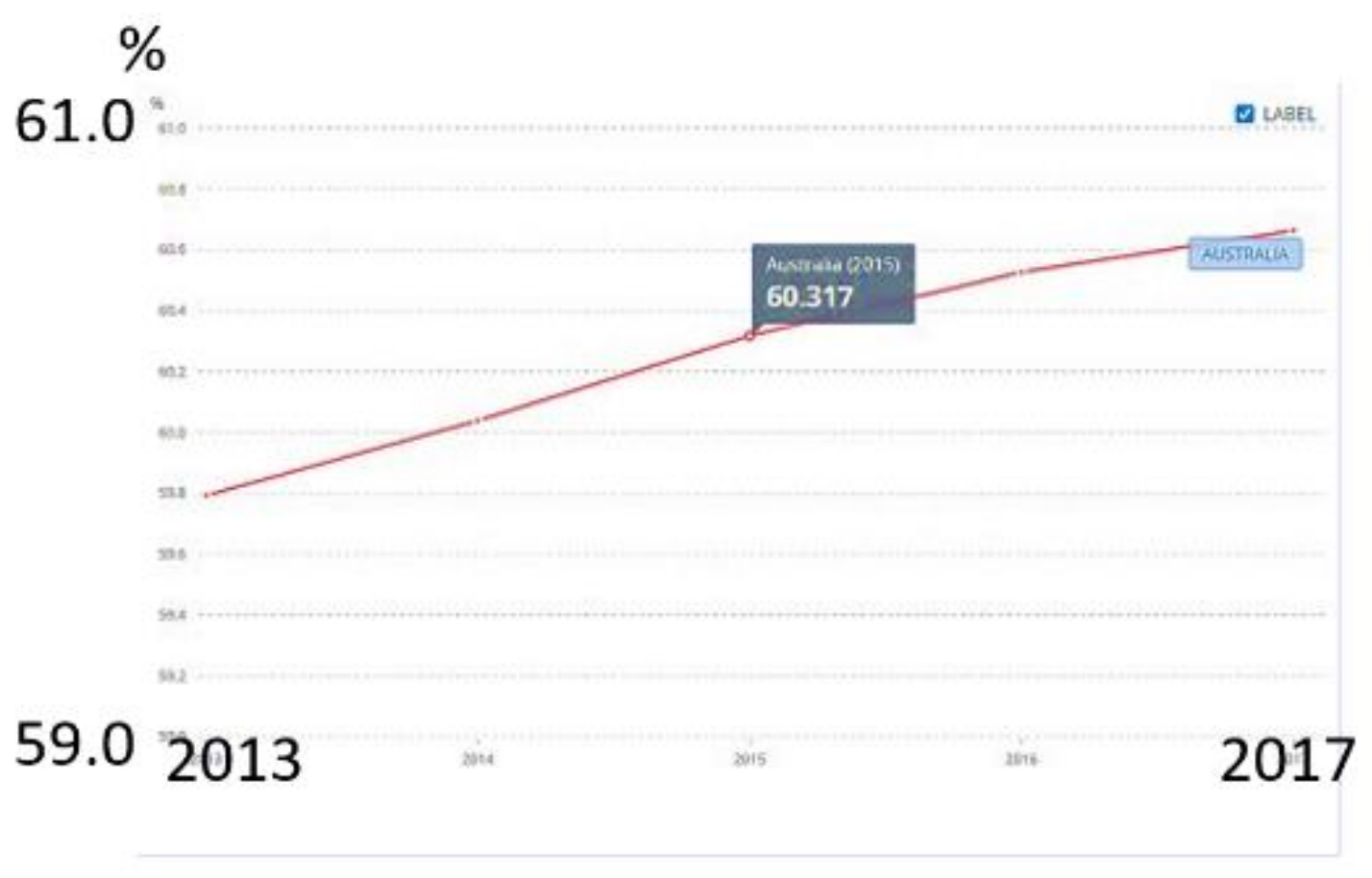
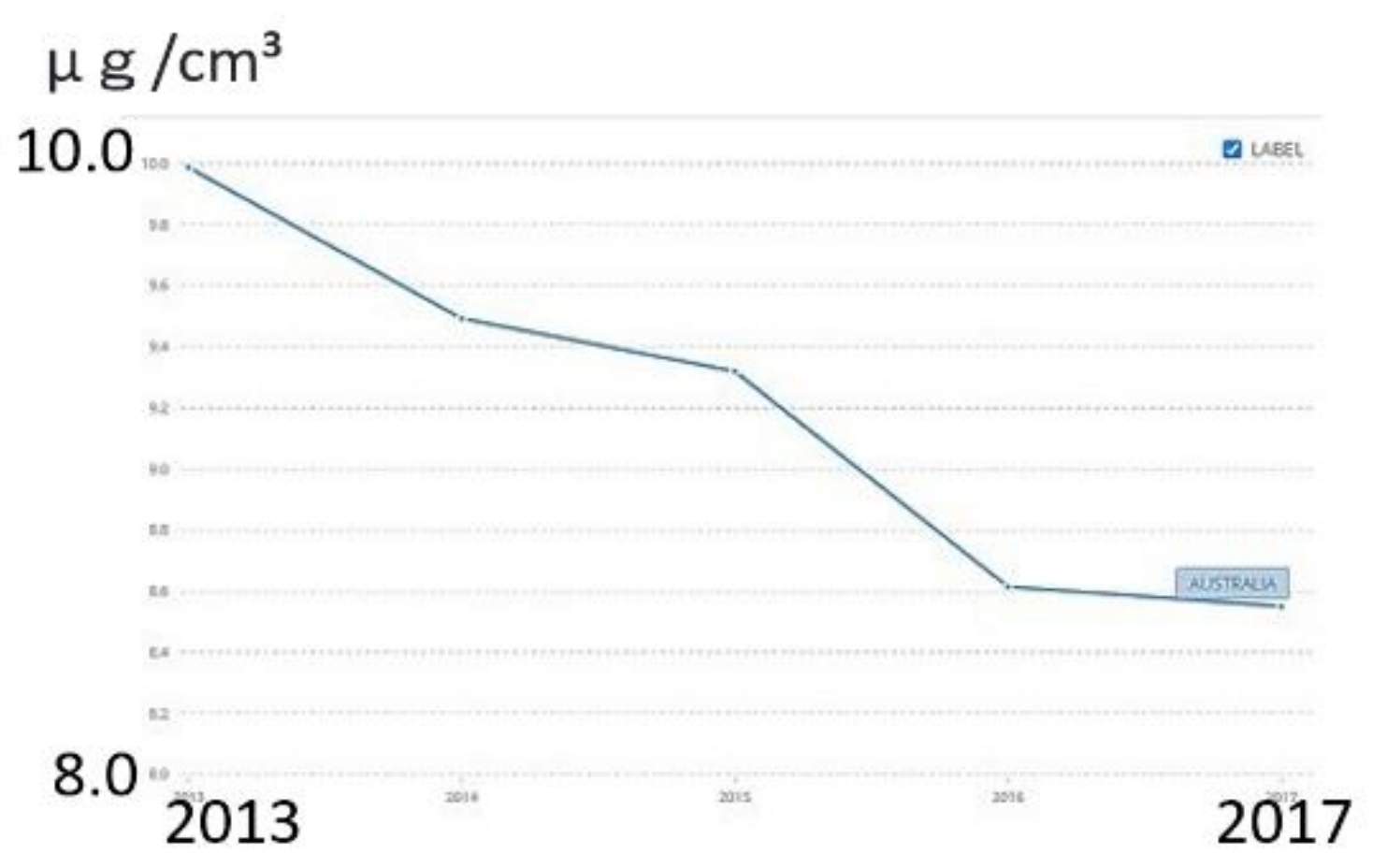
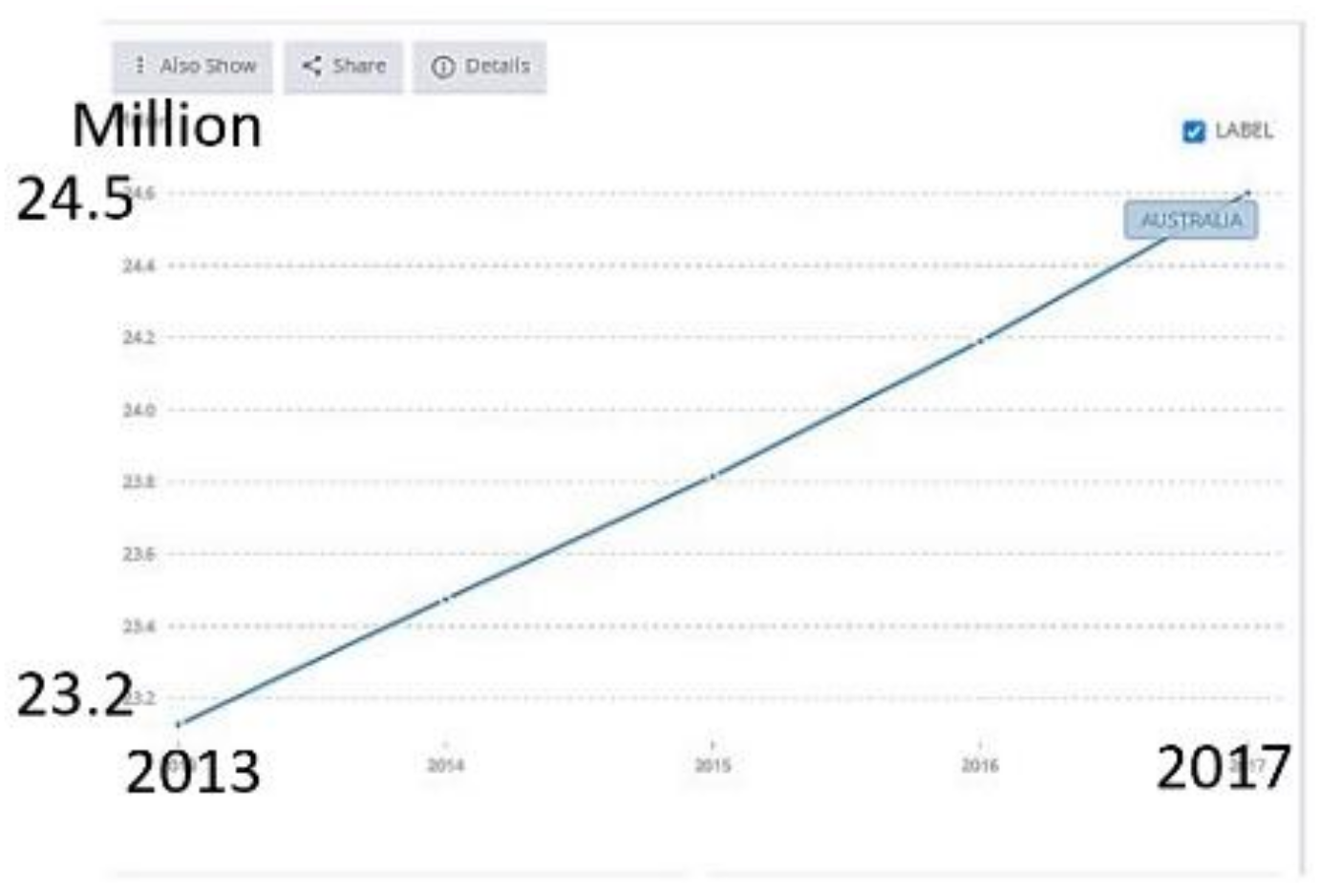
References
- Fekih Zguir, M.; Dubis, S.; Koç, M. Embedding Education for Sustainable Development (ESD) and SDGs values in curriculum: A comparative review on Qatar, Singapore and New Zealand. J. Clean. Prod. 2021, 319, 128534. [Google Scholar] [CrossRef]
- United Nations. The Future We Want. Outcome Document of the United Nations Conference on Sustainable Development; United Nations: New York, NY, USA, 2012. [Google Scholar]
- Tejedor, G.; Segalàs, J.; Barrón, Á.; Fernández-Morilla, M.; Fuertes, M.T.; Ruiz-Morales, J.; Gutiérrez, I.; García-González, E.; Aramburuzabala, P.; Hernández, À. Didactic strategies to promote competencies in sustainability. Sustainability 2019, 11, 2086. [Google Scholar] [CrossRef]
- Lozano, R. Diffusion of sustainable development in universities’ curricula: An empirical example from Cardiff University. J. Clean. Prod. 2010, 18, 637–644. [Google Scholar] [CrossRef]
- Albareda-Tiana, S.; Ruíz-Morales, J.; Azcárate, P.; Valderrama-Hernández, R.; Múñoz, J.M. The EDINSOST project: Implementing the sustainable development goals at university level. In Universities as Living Labs for Sustainable Development; Springer: Berlin/Heidelberg, Germany, 2020; pp. 193–210. [Google Scholar]
- Wals, A.E. A mid-DESD review: Key findings and ways forward. J. Educ. Sustain. Dev. 2009, 3, 195–204. [Google Scholar] [CrossRef]
- Stein, S.; Andreotti, V.; Suša, R.; Ahenakew, C.; Čajková, T. From “education for sustainable development” to “education for the end of the world as we know it”. Educ. Philos. Theory 2022, 54, 274–287. [Google Scholar] [CrossRef]
- Albareda-Tiana, S.; Vidal-Raméntol, S.; Fernández-Morilla, M. Implementing the sustainable development goals at University level. Int. J. Sustain. High. Educ. 2018, 19, 473–497. [Google Scholar] [CrossRef]
- United Nations Statistics Division. SDG Indicators. Global Indicator Framework for the Sustainable Development Goals and Targets of the 2030 Agenda for Sustainable Development. 2022. Available online: https://unstats.un.org/sdgs/indicators/indicators-list/ (accessed on 7 August 2022).
- Günther, J.; Overbeck, A.K.; Muster, S.; Tempel, B.J.; Schaal, S.; Schaal, S.; Kühner, E.; Otto, S. Outcome indicator development: Defining education for sustainable development outcomes for the individual level and connecting them to the SDGs. Glob. Environ. Change 2022, 74, 102526. [Google Scholar] [CrossRef]
- Little, A.W.; Green, A. Successful globalisation, education and sustainable development. Int. J. Educ. Dev. 2009, 29, 166–174. [Google Scholar] [CrossRef]
- United Nations. The Sustainable Development Goals Report 2020; United Nations: New York, NY, USA, 2020. [Google Scholar]
- Mateus, D.M.R.; Costa, M.C.O.; Gomes, M.M.M.S.; Pinho, H.J.O. Promoting education for sustainable development: A collaborative project between a higher education institution and the surrounding school community. In Handbook of Best Practices in Sustainable Development at University Level; Filho, W.L., Vasconcelos, C.R.P.d., Eds.; Springer: Cham, Switzerland, 2022; pp. 411–434. [Google Scholar]
- Iyer-Raniga, U. Intercultural and interdisciplinary engagement for embedding sustainability. In Handbook of Best Practices in Sustainable Development at University Level; Filho, W.L., Vasconcelos, C.R.P.d., Eds.; Springer: Cham, Switzerland, 2022; pp. 377–394. [Google Scholar]
- Razak, D.A. The Disruptive Futures of Education—Post-COVID-19 Pandemic. In The Promise of Higher Education; Springer: Cham, Switzerland, 2021; pp. 407–412. [Google Scholar]
- Vlachopoulos, D. How the “lessons learned” from emergency remote teaching can enrich European higher education in the post-COVID-19 era. High. Learn. Res. Commun. 2022, 12, 7. [Google Scholar]
- Leicht, A.; Heiss, J.; Byun, W.J. Issues and Trends in Education for Sustainable Development; UNESCO Publishing: Paris, France, 2018. [Google Scholar]
- Malone, T.W. What is Collective Intelligence and What Will We do About it? Edited Transcript of Remarks Presented at the Official Launch of the MIT Center for Collective Intelligence. Available online: http://cci.mit.edu/about/MaloneLaunchRemarks.html (accessed on 12 September 2022).
- Malone, T.W.; Laubacher, R.; Dellarocas, C. The collective intelligence genome. MIT Sloan Manag. Rev. 2010, 51, 21. [Google Scholar] [CrossRef]
- Calof, J.; Søilen, K.S.; Klavans, R.; Abdulkader, B.; Moudni, I.E. Understanding the structure, characteristics, and future of collective intelligence using local and global bibliometric analyses. Technol. Forecast. Soc. Change 2022, 178, 121561. [Google Scholar] [CrossRef]
- Napoleone, L.M.; da Conceição Camargo, E.; dos Santos, E.V.; Bertonazzi, S.R.C. Intellectual capital, social capital and collective intelligence. Qual. Quant. Methods Libr. 2017, 6, 479–487. [Google Scholar]
- Peters, M.A. Knowledge socialism: The rise of peer production-collegiality, collaboration, and collective intelligence. Educ. Philos. Theory 2021, 53, 1–9. [Google Scholar] [CrossRef]
- Leite, V. Innovative learning in engineering education: Experimenting with short-term project-oriented research and project-based learning. In Proceedings of the 2017 IEEE 26th International Symposium on Industrial Electronics (ISIE), Edinburgh, UK, 19–21 June 2017; pp. 1555–1560. [Google Scholar]
- Rey-Garcia, M.; Mato-Santiso, V. Enhancing the effects of university education for sustainable development on social sustainability: The role of social capital and real-world learning. Int. J. Sustain. High. Educ. 2020, 21, 1451–1476. [Google Scholar] [CrossRef]
- Albareda-Tiana, S.; García-González, E.; Jiménez-Fontana, R.; Solís-Espallargas, C. Implementing pedagogical approaches for ESD in initial teacher training at Spanish Universities. Sustainability 2019, 11, 4927. [Google Scholar] [CrossRef]
- Riquelme, F.; Munoz, R.; Mac Lean, R.; Villarroel, R.; Barcelos, T.S.; de Albuquerque, V.H.C. Using multimodal learning analytics to study collaboration on discussion groups. Univers. Access Inf. Soc. 2019, 18, 633–643. [Google Scholar] [CrossRef]
- Woods Bartlett, P.; Popov, M.; Ruppert, J. Integrating core sustainability meta-competencies and SDGs across the silos in curriculum and professional development. In Sustainable Development Goals and Institutions of Higher Education; Nhamo, G., Mjimba, V., Eds.; Sustainable Development Goals Series; Springer Nature: Cham, Switzerland, 2020; pp. 71–85. [Google Scholar]
- UNESCO Division for Inclusion, Peace; Sustainable Development, Education Sector. Education for Sustainable Development Goals: Learning Objectives; UNESCO: Paris, France, 2017. [Google Scholar]
- Mezirow, J. Transformative Dimensions of Adult Learning; Jossey–Bass: San Francisco, CA, USA, 1991. [Google Scholar]
- Mezirow, J. An overview on transformative learning. In Lifelong Learning; Routledge: Oxfordshire, UK, 2008; pp. 90–105. [Google Scholar]
- Garreta-Domingo, M.; Sloep, P.B.; Hérnandez-Leo, D.; Mor, Y. Design for collective intelligence: Pop-up communities in MOOCs. AI & Soc. 2018, 33, 91–100. [Google Scholar]
- Sloep, P.B. Fostering sociability in learning networks through ad-hoc transient communities. In Proceedings of the International Conference on Computer-Mediated Social Networking, Dunedin, New Zealand, 11–13 June 2008; pp. 62–75. [Google Scholar]
- Van Rosmalen, P.; Sloep, P.B.; Brouns, F.; Kester, L.; Berlanga, A.; Bitter, M.; Koper, R. A model for online learner support based on selecting appropriate peer tutors. J. Comput. Assist. Learn. 2008, 24, 483–493. [Google Scholar] [CrossRef]
- Yoshida, M.; Khlaisang, J.; Xiong, C. Use of the Genuine Progress Indicator in global education. Glob. Soc. Educ. 2020, 18, 97–108. [Google Scholar] [CrossRef]
- Graneheim, U.H.; Lundman, B. Qualitative content analysis in nursing research: Concepts, procedures and measures to achieve trustworthiness. Nurse Educ. Today 2004, 24, 105–112. [Google Scholar] [CrossRef]
- Moretti, F.; van Vliet, L.; Bensing, J.; Deledda, G.; Mazzi, M.; Rimondini, M.; Zimmermann, C.; Fletcher, I. Standardized approach to qualitative content analysis of focus group discussions from different countries. Patient Educ. Couns. 2011, 82, 420–428. [Google Scholar] [CrossRef] [PubMed]
- Cho, J.Y.; Lee, E.-H. Reducing confusion about grounded theory and qualitative content analysis: Similarities and differences. Qual. Rep. 2014, 19, 1–20. [Google Scholar] [CrossRef]
- Schreier, M. Qualitative Content Analysis in Practice; Sage Publications: London, UK, 2012. [Google Scholar]
- Mayring, P. Qualitative Content Analysis: Theoretical Foundation, Basic Procedures and Software Solution. Available online: https://www.ssoar.info/ssoar/handle/document/39517 (accessed on 4 August 2022).
- Mayring, P. Qualitative content analysis. Forum Qual. Soc. Res. 2000, 1, 1–5. [Google Scholar] [CrossRef]
- Mayring, P. Qualitative content analysis: Demarcation, varieties, developments. Forum Qual. Soc. Res. 2019, 20, 1–26. [Google Scholar]
- Bakeman, R.; Gottman, J.M. Observing Interaction: An Introduction to Sequential Analysis; Cambridge University Press: Cambridge, UK, 1997. [Google Scholar]
- Quera, V.; Bakeman, R. GSEQ for Windows: New software for the analysis of interaction sequences. DiPAV Quaderni 2001, 9–32. [Google Scholar] [CrossRef]
- Wang, C.; Fang, T.; Gu, Y. Learning performance and behavioral patterns of online collaborative learning: Impact of cognitive load and affordances of different multimedia. Comput. Educ. 2020, 143, 103683. [Google Scholar] [CrossRef]
- Brauner, E.; Boos, M.; Kolbe, M. The Cambridge Handbook of Group Interaction Analysis; Cambridge University Press: Cambridge, UK, 2018. [Google Scholar]
- Sun, Z.; Lin, C.-H.; Lv, K.; Song, J. Knowledge-construction behaviors in a mobile learning environment: A lag-sequential analysis of group differences. Educ. Technol. Res. Dev. 2021, 69, 533–551. [Google Scholar] [CrossRef]
- Ozturk, H.T.; Deryakulu, D.; Ozcinar, H.; Atal, D. Advancing learning analytics in online learning environments through the method of sequential analysis. In Proceedings of the 2014 International Conference on Multimedia Computing and Systems (ICMCS), Marrakesh, Morocco, 14–16 April 2014; pp. 512–516. [Google Scholar]
- Hou, H.-T. Exploring the behavioural patterns in project-based learning with online discussion: Quantitative content analysis and progressive sequential analysis. Turk. Online J. Educ. Technol. 2010, 9, 52–60. [Google Scholar]
- Saqr, M.; Alamro, A. The role of social network analysis as a learning analytics tool in online problem based learning. BMC Med. Educ. 2019, 19, 160. [Google Scholar] [CrossRef] [PubMed]
- Hansen, D.L.; Shneiderman, B.; Smith, M.A. Analysing Social Media Networks with NodeXL: Insights from a Connected World; Elsevier: Amsterdam, The Netherlands, 2011. [Google Scholar]
- Freeman, L.C. A set of measures of centrality based on betweenness. Sociometry 1977, 27, 35–41. [Google Scholar] [CrossRef]
- Burt, R.S. The social capital of structural holes. In The New Economic Sociology: Developments in an Emerging Field; Guillén, M.F., Collins, R., England, P., Russell, M., Eds.; Russell Sage Foundation: New York, NY, USA, 2002; pp. 202–247. [Google Scholar]
- Bonacich, P. Factoring and weighting approaches to status scores and clique identification. J. Math. Sociol. 1972, 2, 113–120. [Google Scholar] [CrossRef]
- Harel, D.; Koren, Y. A fast multiscale method for drawing large graphs. J. Graph Algorithms Appl. 2002, 6, 179–202. [Google Scholar] [CrossRef]
- Oinas, S.; Hotulainen, R.; Koivuhovi, S.; Brunila, K.; Vainikainen, M.-P. Remote learning experiences of girls, boys and non-binary students. Comput. Educ. 2022, 183, 104499. [Google Scholar] [CrossRef]
- Secundo, G.; Riad Shams, S.M.; Nucci, F. Digital technologies and collective intelligence for healthcare ecosystem: Optimizing Internet of Things adoption for pandemic management. J. Bus. Res. 2021, 131, 563–572. [Google Scholar] [CrossRef]
- Laubacher, R. Entrepreneurship and venture capital in the age of collective intelligence. In Chance and Intent—Managing the Risks of Innovation and Entrepreneurship; Routledge: London, UK, 2012; Volume 8. [Google Scholar]
- Scherak, L.; Rieckmann, M. Developing ESD competences in higher education institutions—Staff training at the University of Vechta. Sustainability 2020, 12, 10336. [Google Scholar] [CrossRef]
- Yoshida, M.; Xiong, C.; Liu, Y.; Liu, H. An investigation into the formation of learning groups on social media and their growth. Interact. Learn. Environ. 2020, 1–14. [Google Scholar] [CrossRef]
- Yoshida, M. Investigation of university students’ behaviour in a heterarchical Twitter community. Educ. Inf. Technol. 2021, 26, 3155–3174. [Google Scholar] [CrossRef]
- Solis, B. The End of Business as Usual: Rewire the Way You Work to Succeed in the Consumer Revolution; John Wiley & Sons: Hoboken, NJ, USA, 2011. [Google Scholar]
- Yoshida, M.; Petsangsri, S. Analysis of Scholarly Communications of Students on Twitter. Int. J. Emerg. Technol. Learn. 2022, 17, 4–19. [Google Scholar] [CrossRef]
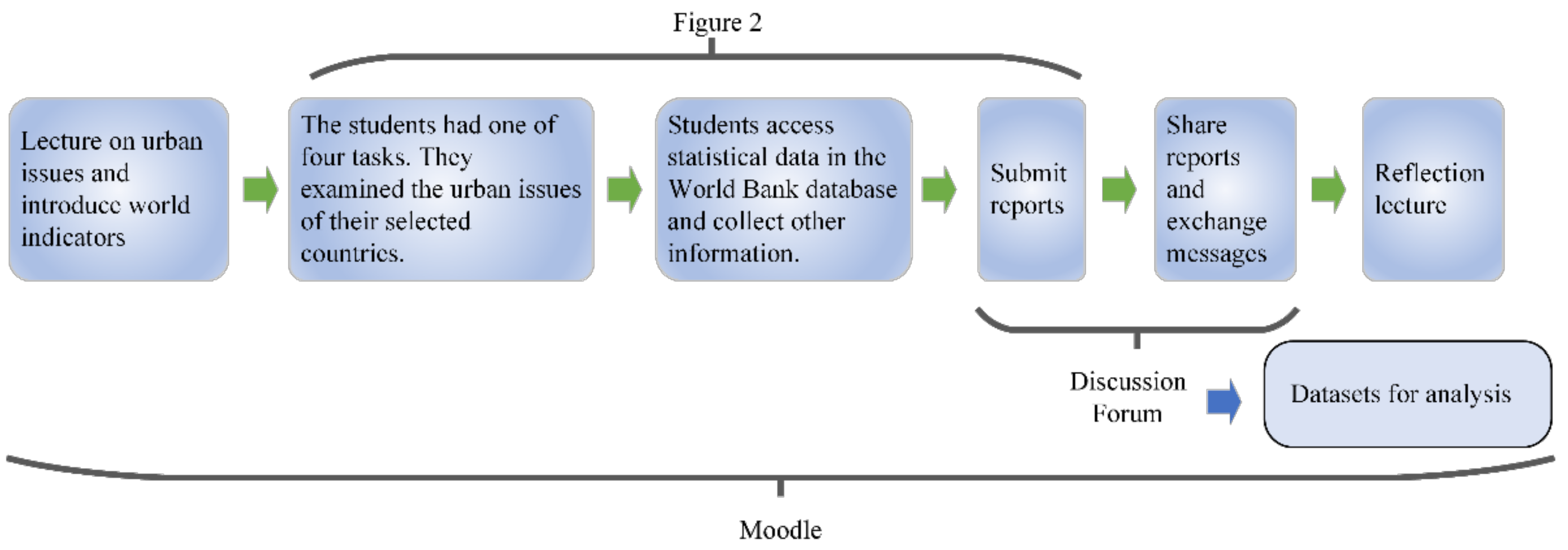
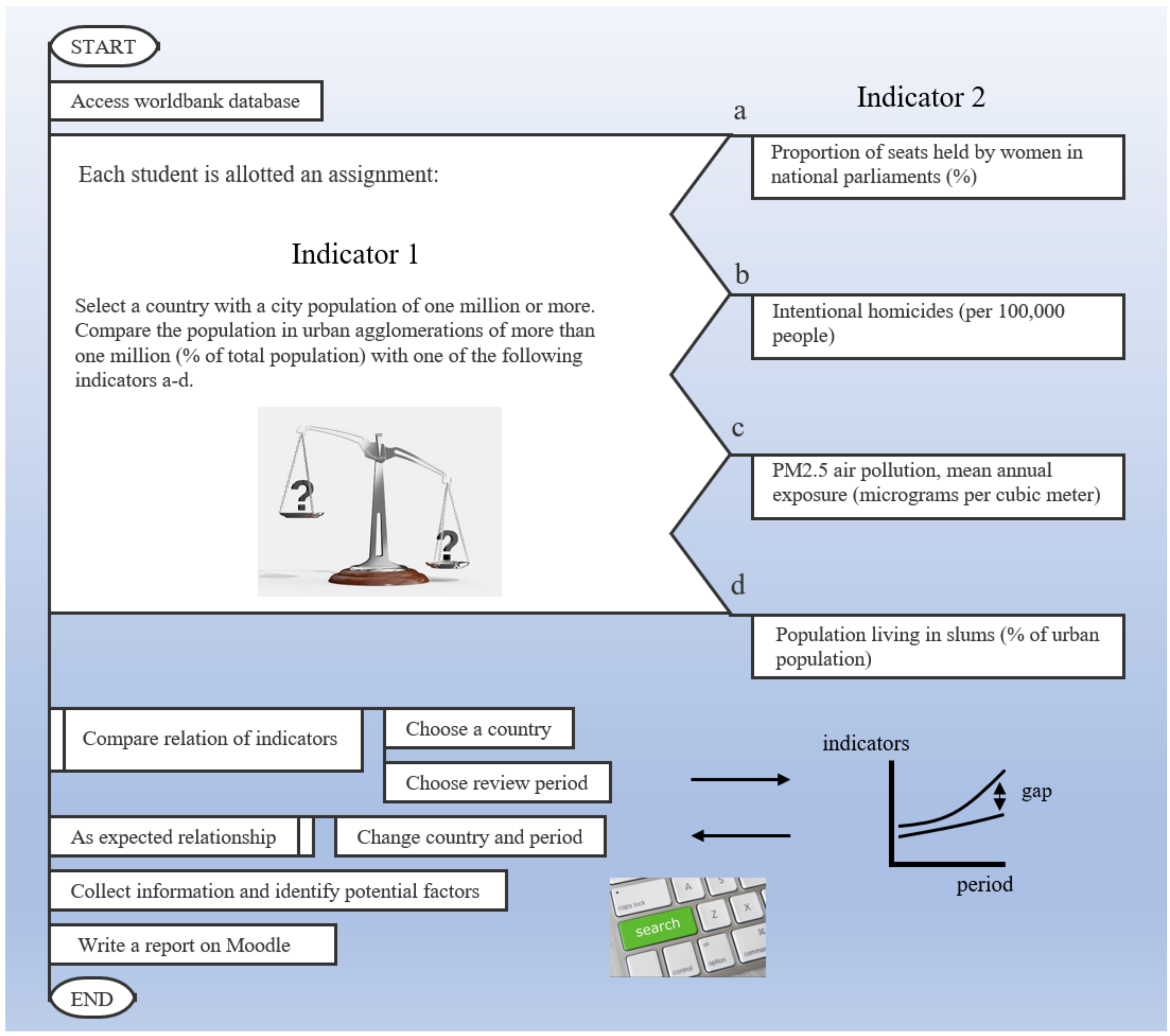


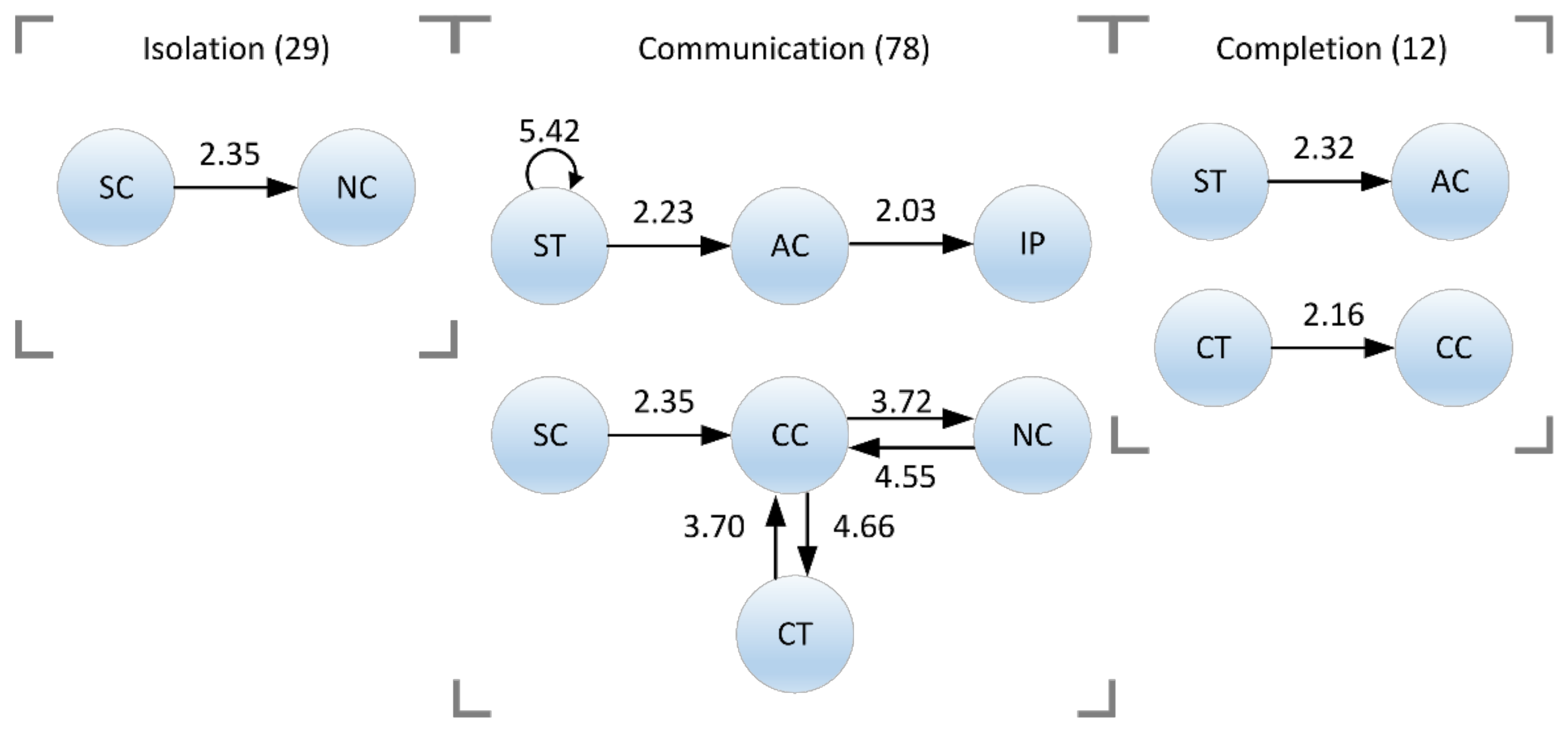
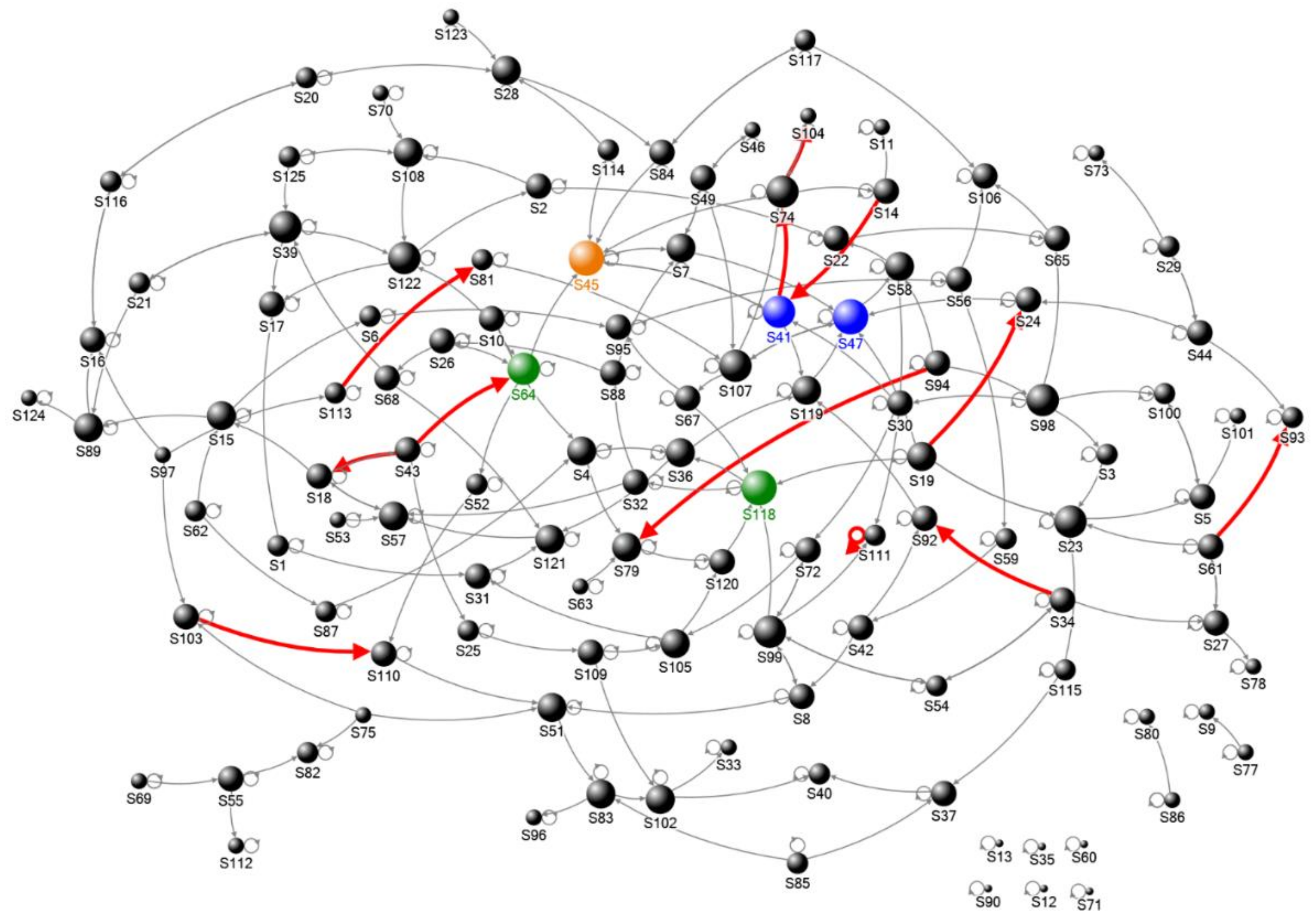
| Key Competencies | Explanation |
|---|---|
| Systems thinking competency (ST) | Ability to recognize and understand relationships, analyze complex systems, consider about how systems are embedded in different domains and scales, and deal with uncertainty. |
| Anticipatory competency (AC) | Ability to understand and evaluate multiple futures (possible, probable, and desirable), create one’s own vision for the future, apply the precautionary principle, assess the consequences of actions, and cope with risks and changes. |
| Normative competency (NC) | Ability to understand and reflect on the norms and values that underlie one’s actions and negotiate sustainability values, principles, goals, and targets in a context of conflicts of interests and tradeoffs, uncertain knowledge, and contradictions. |
| Strategic competency (SC) | Ability for collective development and implementation of innovative actions that foster sustainability at the local level and further afield. |
| Collaboration competency (CC) | Ability to learn from others, understand and respect the needs, perspectives, and actions of others (empathy), understand, relate to, and be sensitive to others (empathic leadership), deal with conflicts in a group, and facilitate collaborative and participatory problem solving. |
| Critical thinking competency CT) | Ability to question norms, practices, and opinions; reflect on one’s values, perceptions, and actions; and take a position related to the sustainability discourse. |
| Self-awareness competency (SA) | Ability to reflect on one’s role in the local community and (global) society, continually evaluate and further motivate one’s actions, and cope with one’s feelings and desires. |
| Integrated problem-solving competency (IP) | Overarching ability to integrate the above-mentioned competencies and apply different problem-solving frameworks to complex sustainability problems and develop viable, inclusive, and equitable solution options that promote sustainable development. |
| Layer | View | Remarks |
|---|---|---|
| Code co-occurrence | Focused | 58% of CI co-occurred with CC. |
| CC was directed to find a shareable norm. | ||
| Code sequence | Relational | Active discussion using various ESD competencies emerged. Threads with CI lead to AC and CT. |
| Code distribution | Holistic | CI messages were distributed in the community. |
| CI emerged from nodes of various degrees. | ||
| Brokers and influencers are detected. | ||
| Opinions were referenced and interconnected. |
Publisher’s Note: MDPI stays neutral with regard to jurisdictional claims in published maps and institutional affiliations. |
© 2022 by the author. Licensee MDPI, Basel, Switzerland. This article is an open access article distributed under the terms and conditions of the Creative Commons Attribution (CC BY) license (https://creativecommons.org/licenses/by/4.0/).
Share and Cite
Yoshida, M. Effects of Using World Indicators for Online ESD Learning. Sustainability 2022, 14, 13919. https://doi.org/10.3390/su142113919
Yoshida M. Effects of Using World Indicators for Online ESD Learning. Sustainability. 2022; 14(21):13919. https://doi.org/10.3390/su142113919
Chicago/Turabian StyleYoshida, Masami. 2022. "Effects of Using World Indicators for Online ESD Learning" Sustainability 14, no. 21: 13919. https://doi.org/10.3390/su142113919
APA StyleYoshida, M. (2022). Effects of Using World Indicators for Online ESD Learning. Sustainability, 14(21), 13919. https://doi.org/10.3390/su142113919







